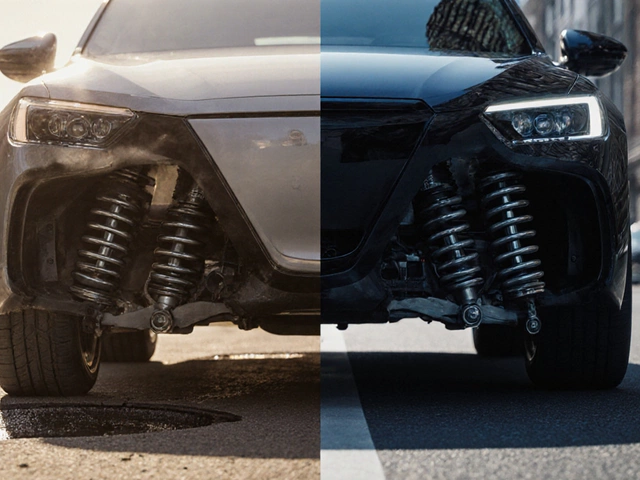Ever wondered how to tell if your car’s oil reservoir is running dry? It’s easier than you think, and super important. Low oil levels can spell disaster for your engine, leading to everything from poor performance to a complete breakdown. So, spotting the signs early could save you loads of time, hassle, and cash.
So, what should you keep an eye out for? Most modern cars are helpful enough to flash a low oil warning light on your dashboard. But not all vehicles come equipped with these friendly alerts. You might notice a knocking or ticking sound coming from the engine, or perhaps your car is overheating more frequently than usual. Both are red flags indicating possible low oil levels.
The key here? Keep it simple and consistent – regularly check your car’s oil dipstick. It’s not rocket science; just a simple pull, wipe, reinsert, and check process. It literally takes a minute. Make sure you’re parked on level ground and the engine is cool for an accurate reading. And hey, always have a quart of oil handy in your trunk just in case you need a top-off.
Why Oil Levels Matter
If you're asking why keeping an eye on engine oil is crucial, you're not alone. Many folks underestimate its importance till something goes wrong. The oil in your engine isn't just there to fill space. It plays several pivotal roles, making it the unsung hero of your vehicle.
The Lifeline of Your Engine
Think of oil as the lifeblood of your car. Much like how blood circulates oxygen and nutrients in your body, oil flows through the engine, providing lubrication and reducing friction among its moving parts. Without enough oil, these parts grind against each other, leading to heat buildup and ultimately potential damage.
Cooling and Cleaning
Besides lubrication, oil acts as a coolant and a cleanser for your engine. As it circulates, it picks up dirt, debris, and any sludge, preventing buildup that could block the system. It also carries away some of the heat generated by engine activity, assisting the cooling system in keeping temperatures controlled.
The Consequences of Ignoring Oil Levels
Neglecting your oil levels can have severe repercussions. An engine operating on insufficient oil won't last long, and you could face complete engine failure. Imagine the costs you'd rack up replacing engine components or, worst-case scenario, the engine itself.
According to some industry data, simply maintaining proper oil levels can increase engine life by up to 75%. So, keeping your oil where it needs to be could save you a headache down the road and a huge repair bill.
It’s also about efficiency. With the right amount of oil, your car runs smoother, which can lead to better fuel economy. Who doesn’t want more miles per gallon?
Recognizing Low Oil Signs
Catching signs of low engine oil can save you a bundle in costly repairs. Pay attention to these common indicators that your car might be running low on oil.
Dashboard Warning Light
The most straightforward sign is the dashboard oil warning light. When this flicks on, it’s time to check your oil levels pronto. It's not just about low levels, though—it could also signal a drop in oil pressure, which is just as critical.
Engine Noises
Engine making noises it shouldn't? Strange knocking or ticking sounds might be your engine crying out for more oil. Reduced lubrication means more friction and wear, which isn't good news for your car.
Overheating Engine
Notice the temperature gauge inching up more than usual? An overheating engine can often be linked to low oil levels. Oil helps with cooling, and without enough of it, your engine struggles to manage heat.
Oil Smoke
If you catch blue smoke puffing from your tailpipe, it could be burnt oil—a sign there's been a leak or the oil level is too low. Not something you want to ignore.
Regular Checks
A little prevention goes a long way. Make it a habit to check your oil every few weeks. It might sound like a chore, but it beats the headache of engine trouble down the line.
Quick Checklist
- Monitor dashboard lights
- Listen for odd engine noises
- Watch for overheating
- Look for smoke signals
- Check oil levels often

Checking Oil Levels
Checking your car's engine oil levels is a straightforward task that can literally extend your engine’s life. You only need a few minutes and a rag or paper towel. Here's how you can do it like a pro:
1. Ensure Safety First
Before you even pop the hood, make sure your car is on a flat surface. This ensures an accurate oil reading, as an incline might give you a false sense of oil level. Also, wait a good 10 minutes after the engine’s turned off. Why? It lets the oil settle down into the oil pan, giving you a better reading.
2. Locate the Dipstick
Once you’re ready, open the hood and find the dipstick. It usually has a bright handle to make it easy to spot. Don’t confuse it with the transmission fluid dipstick; they’re different.
3. Get the Reading
- Pull the dipstick out and wipe it clean using your rag or paper towel.
- Stick it back in and make sure it’s seated fully in its tube. Wait a second, then pull it out again.
- Check the level. There are two marks, “F” (full) and “L” (low). Ideally, the oil level should be between these two.
If the oil level is below the L mark, it’s time for an oil top-off.
4. Check Oil Quality
While you're at it, take a moment to assess the oil’s color. Fresh oil is typically golden brown, while older oil turns dark and thick. If it’s darkened or has particles, it might soon be time for an oil change, even if the level is fine.
5. Top Off If Necessary
If the oil is low, adding oil is simple. Get the right type for your car's engine (usually mentioned in the owner’s manual) and slowly pour it in, checking frequently until you hit the “F” mark on the dipstick.
Remember, regular car maintenance goes a long way. Staying on top of your car maintenance game keeps your engine running smoothly, preventing those dreaded breakdowns.
Prevention Tips
Keeping your engine oil healthy is all about staying ahead of issues before they arise. Here's how you can maintain ideal oil levels and ensure your car stays in the best shape possible.
Regular Oil Changes
One of the simplest ways to prevent low oil levels is by scheduling regular oil changes. Generally, it's a good idea to change your oil every 3,000 to 5,000 miles. Check your owner’s manual for specifics; different cars may have different needs.
Keep an Eye on the Dipstick
Checking your oil with the dipstick every few weeks is an easy habit to form. Not only does this help you ensure there’s enough engine oil, but it also allows you to check the oil’s color and consistency. If you notice it's dark or sludgy, it’s time for a change.
Fix Leaks Promptly
Oil leaks are sneaky little problems that can lead to bigger issues. If you spot oil stains under your car, don't ignore them. Get your car checked out to prevent any dirty oil from wreaking havoc.
Use Quality Oil
Don’t skimp on oil quality. A good oil brand will not only lubricate better but also last longer. Consult your vehicle’s manual or a trusted mechanic to ensure you're using the right oil type for your engine.
Mind Your Driving Habits
How you drive can impact your oil levels, believe it or not. Frequent, short trips and aggressive driving can lead to quicker oil degradation. Consider easing up on the pedal and try to combine errands to keep your vehicle running more efficiently.
Monitor with Technology
Use oil monitoring systems available in many modern cars. These systems can warn you about low oil levels before you even pop the hood. Make sure to familiarize yourself with these features and follow any notifications.
By incorporating these tips, you can save yourself a headache down the road. Keeping your eye on car maintenance like checking oil levels means you're investing in the longevity and efficiency of your ride.






